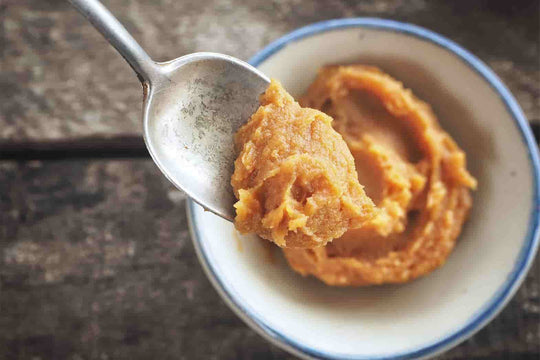
Koji Rice for Shiokoji, 300g
Description
Koji rice for shiokoji is possibly the most important ingredient in Japanese cuisine. Without it, there’d be no soy sauce, miso, sake or mirin!
The Japanese rice is inoculated with a strand of naturally occurring fermentation culture called Aspergillus oryzae. The cultured rice is used to ferment soybean or rice mixtures, turning them into the most recognisable flavours of Japanese cuisine. With koji rice you can have a go at making your own miso!
Another popular use for koji rice is making shiokoji – an umami-boosting seasoning that doubles as a tenderising marinade. To make your own shiokoji, measure 100g of koji rice into a mixing bowl. Rub the grains with clean hands until they become fragrant. Then add 25g good quality fine sea salt and mix together.
Pour in 120ml water, or slightly more if the surface of the rice isn’t covered. Using clean hands again, rub the water into the koji rice until it starts to feel thicker. Transfer to a sterilised 500ml jar, and top up with fresh water if necessary – the surface of the koji should always be just covered with water.
Ferment the shiokoji at room temperature. Using a clean spoon, mix the koji once a day. Ferment for one week in the spring/summer, or two weeks in autumn/winter. You can add more water at any point during the fermentation process if the koji starts to feel too solid. The finished shiokoji will have a sweet, fermented smell. Store in the fridge for up to six months.
Add shiokoji to sauces, soups and stews instead of salt to bring out the best flavours in your ingredients. Use on its own to marinade chicken, beef or pork to make it tender and flavourful. Or even add to meals as a seasoning just before serving for an intense umami hit straight on the tongue. Use a blender or pestle & mortar to make a smoother paste if you prefer not to have whole grains of rice in your sauces or marinades.
Store in a cool, dry place away from strong light.
Product formulations and details may change. For the latest ingredients and allergen information always check product packaging prior to consumption. Ingredients: rice.
-
Origin: Japan
-
Size: 300g
-
Best before: 05 September 26
-
SKU: UI0025
-
Minimum shelf life: 3 months
-
Categories:
Autumn Edit Japanese Food & Ingredients Kenji Morimoto's Top Picks Koji rice Pasta, Rice & Beans
Delivery
| Delivery Option | Price |
|---|---|
| EVRi ? | £4.75 or FREE for orders over £60 |
| DPD Express ? | £7 or FREE for orders over £100 |
| DPD Signature Required ? | £7 or FREE for orders over £60 |
Disclaimer
These summary details have been prepared for information purposes only, and are designed to enhance your shopping experience on the Sous Chef website. While we have taken care in preparing this summary and believe it is accurate, it is not a substitute for your reading the product packaging and label prior to use. You should note that products and their ingredients are subject to change.






